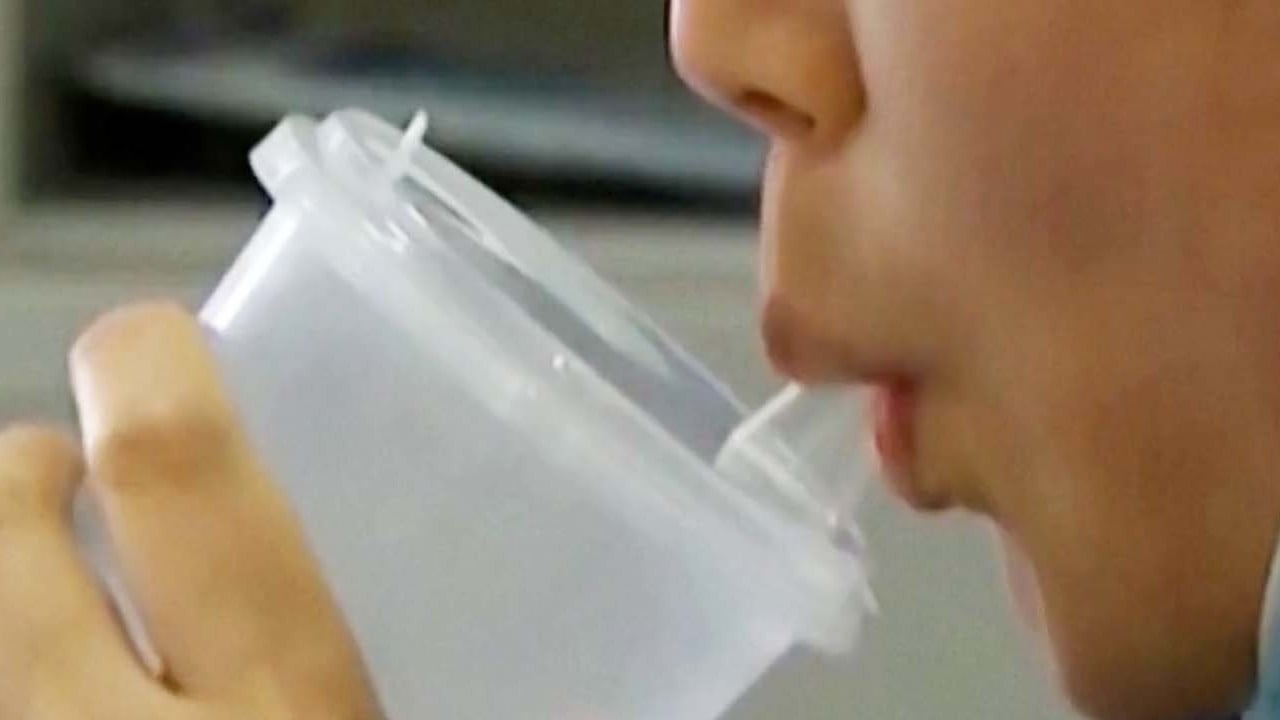A new powdered, inhalable vaccine could provide better protection against respiratory viral infections than traditional injectable vaccines, according to the Chinese researchers who developed it.
The aerosol-based vaccine produces microscopic spheres that measure just 2.8 microns across, and was found to produce a long, sustained immune response when tested on mice, hamsters and monkeys, with a single-dose, the researchers said in a paper published in the journal Nature on Wednesday.
To produce an aerosol vaccine capable of depositing microcapsules of vaccine into the lungs, the team, led by researchers at the Chinese Academy of Sciences (CAS), took advantage of the same pathway that is used by fine pollutants known as respirable suspended particulates or particles (RSPs).
Moderna set to sign US$1 billion investment deal with Shanghai to tackle China market
Moderna set to sign US$1 billion investment deal with Shanghai to tackle China market
The airborne particles are caused mostly by the burning of wood and fossil fuels, and can cause serious threats to human health. The tiny size of the inhaled particles has been associated with various health problems, according to the US Environmental Protection Agency (EPA).
The dry, powdered vaccine “can reach the alveoli directly and be effectively deposited,” in the lungs, Ye Tong, co-first author from the CAS Institute of Process Engineering, told the Science Times.
Vaccines delivered by injection “do not provide a first line of protection at the respiratory tract”, due to a deficiency in producing IgA and IgG antibodies, according to the paper. They also do not provide the mucosal immune response that inhalable vaccines can.
But the team found that vaccines developed for nasal or nebulisation-based administration were often in liquid form, which generally required multiple doses or boosters for immunisation, as well as intensive cold chain storage and transport.
These vaccines were also not aerosol-based, which limited their ability to penetrate deeper into the airways, the paper said.
So the team set out to produce a dry, powder aerosol vaccine that could give immune protection with a single-dose. The researchers also wanted the vaccine to be capable of being deposited into the alveoli, the very small air sacs within the lungs, to support both a sustained release of antigens and the induction of cellular and mucosal immune responses.
China needs to step up its fight to contain growing mpox outbreak
China needs to step up its fight to contain growing mpox outbreak
Since small particles also have the potential to be exhaled after they are inhaled, the size of the microcapsules needed to be very small – under 4 microns – to be deposited deep into the lungs, according to the paper.
Once the Covid-19 antigens were packaged into the microcapsules they were tested in mice and monkeys, as well as hamsters – a gold standard model for testing the virus.
With just a single dose, delivered through a dry powder inhaler, the team found that the vaccine “conferred efficient protection” against Covid-19 in all the animals by producing large amounts of IgA and IgG antibodies.
The scientists also used fluorescent tags to track the vaccine microcapsules while examining the animal lungs under microscopes.
The fluorescence signals were still present in the lungs of mice 42 days after immunisation, compared to just five days for the control vaccine group, according to the paper.
Having the microcapsules deposited deep within the lungs allowed for a slower, sustained release of the vaccine to support “continuous antigen stimulation”, according to the paper.
The vaccine was also tested for host-to-host transmission in hamsters. The team found that hamsters given the aerosol vaccine had a greater immune benefit against the Omicron variant.
According to the Science Times, the microcapsule delivery platform could have even greater potential, adding that the team had begun researching the microcapsule delivery format to create an inhalable chemotherapy drug before the pandemic.
Chinese mRNA researchers celebrate Nobel win for field’s pioneers
Chinese mRNA researchers celebrate Nobel win for field’s pioneers
Since it is non-invasive and does require immediate cold storage, the delivery platform is relatively inexpensive to store, which could aid in deliveries to remote areas, according to the paper.
At room temperature, the team found that the dry powder remained stable for more than a month, according to a news release from Nature about the paper.
“There is more enthusiasm for this type of administration than for traditional injection, and a single-dose regime is favourable to substantially increase the proportion of total completed vaccination recipients,” the researchers said.




